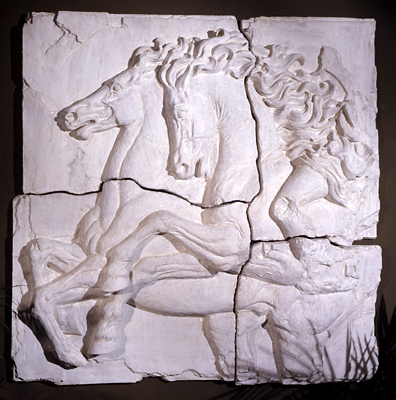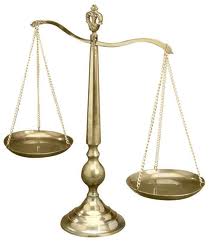The Balanced Horse

10.28.11 TME
return to
Educated Equestrian
return to
Educated Equestrian

Go out into your yard and find two rocks, one the size of your fist, and one half that size. Place one into each hand….can you determine, by this brief and relatively imprecise experiment, in which hand more weight is placed?
Of course you can. While our sensitivity might not be the most scientific measurement in the world, we are capable, through our tactile sense, of determining which hand is “heavier”, which is “lighter”. If we were to continue this experiment, one could scour the barnyard, searching for pebbles to supplement the lighter hand, until we could estimate each hand were holding equal weight. If we were to change material, say, from rocks, to pitchers of water, we could broaden this experiment. We could shift that weight, by pouring from one pitcher to the other, until equilibrium is established. Pitchers of water are extremely versatile and compliant subjects; we can easily move the weight from one side to the other at will, to comply with our desire and intended purpose.
And so it is with the horse.
In its natural state, a horse’s center of gravity lies approximately at its wither—its weight rests primarily upon its forehand. This natural weight distribution is what makes direct reining so easy. The weighing of the forehand allows a “lightening” of the hindquarters, and this is what makes movement of the hindquarters possible. A primary concern of training is to develop a system of communication, between rider and horse, which allows the rider to request of the horse a shift of weight from front to back, to produce a “lightening” of the forehand, and weighing of the hindquarter. This is accomplished through skilled use of the indirect rein, and allows the horse to fix his rear pillars of support (his back legs), and rotate his front around them. We can become more precise in our requests, at some point asking for lightening or weighing of any particular of the four legs, but our requests should begin simply by asking for front to back, back to front transitions.
Of course you can. While our sensitivity might not be the most scientific measurement in the world, we are capable, through our tactile sense, of determining which hand is “heavier”, which is “lighter”. If we were to continue this experiment, one could scour the barnyard, searching for pebbles to supplement the lighter hand, until we could estimate each hand were holding equal weight. If we were to change material, say, from rocks, to pitchers of water, we could broaden this experiment. We could shift that weight, by pouring from one pitcher to the other, until equilibrium is established. Pitchers of water are extremely versatile and compliant subjects; we can easily move the weight from one side to the other at will, to comply with our desire and intended purpose.
And so it is with the horse.
In its natural state, a horse’s center of gravity lies approximately at its wither—its weight rests primarily upon its forehand. This natural weight distribution is what makes direct reining so easy. The weighing of the forehand allows a “lightening” of the hindquarters, and this is what makes movement of the hindquarters possible. A primary concern of training is to develop a system of communication, between rider and horse, which allows the rider to request of the horse a shift of weight from front to back, to produce a “lightening” of the forehand, and weighing of the hindquarter. This is accomplished through skilled use of the indirect rein, and allows the horse to fix his rear pillars of support (his back legs), and rotate his front around them. We can become more precise in our requests, at some point asking for lightening or weighing of any particular of the four legs, but our requests should begin simply by asking for front to back, back to front transitions.
“Balance - The degree of ease with which the horseman changes the distribution of weight on the four limbs to give different positions shows the degree of balance of the horse. The easier the displacement of weight in any direction, the more perfect is the balance. By virtue of this principle one says that the horse is “in equilibrium” when simple indications are enough for the horseman to change at will the disposition of the weight on its columns of support.” Kerbrech
Much like the rock or water experiments, there is a tactile sensation which can be felt by the rider, when this shift of weight occurs. The educated rider should develop her awareness of this shift, and how to detect it in her seat, legs, and hands. The hand can sensitively and accurately detect the degree of the weight shift to and from the front end, via the weight in the rein. Rein indications, on a well-balanced horse, do not require more force than the weight of the rein itself. This is why lightness of the rein aids is so crucial. Firstly, it requires the horse to shift his weight, rebalance himself, without “leaning” on the aid. Secondly, lightness is proof the horse is in balance; a well-balanced horse makes transitions with ease and minimum resistance.
The balanced horse is not only an athletic horse, capable of spins, turns, fancy or handy maneuvering, suitable for competition or practical ranch work. The well balanced horse is also a pleasure to ride, because he is able to comply with our requests with a light indication. Balance is an attribute which can be appreciated by the competitor and pleasure rider alike, and should be one of the fundamental goals of training.
The balanced horse is not only an athletic horse, capable of spins, turns, fancy or handy maneuvering, suitable for competition or practical ranch work. The well balanced horse is also a pleasure to ride, because he is able to comply with our requests with a light indication. Balance is an attribute which can be appreciated by the competitor and pleasure rider alike, and should be one of the fundamental goals of training.